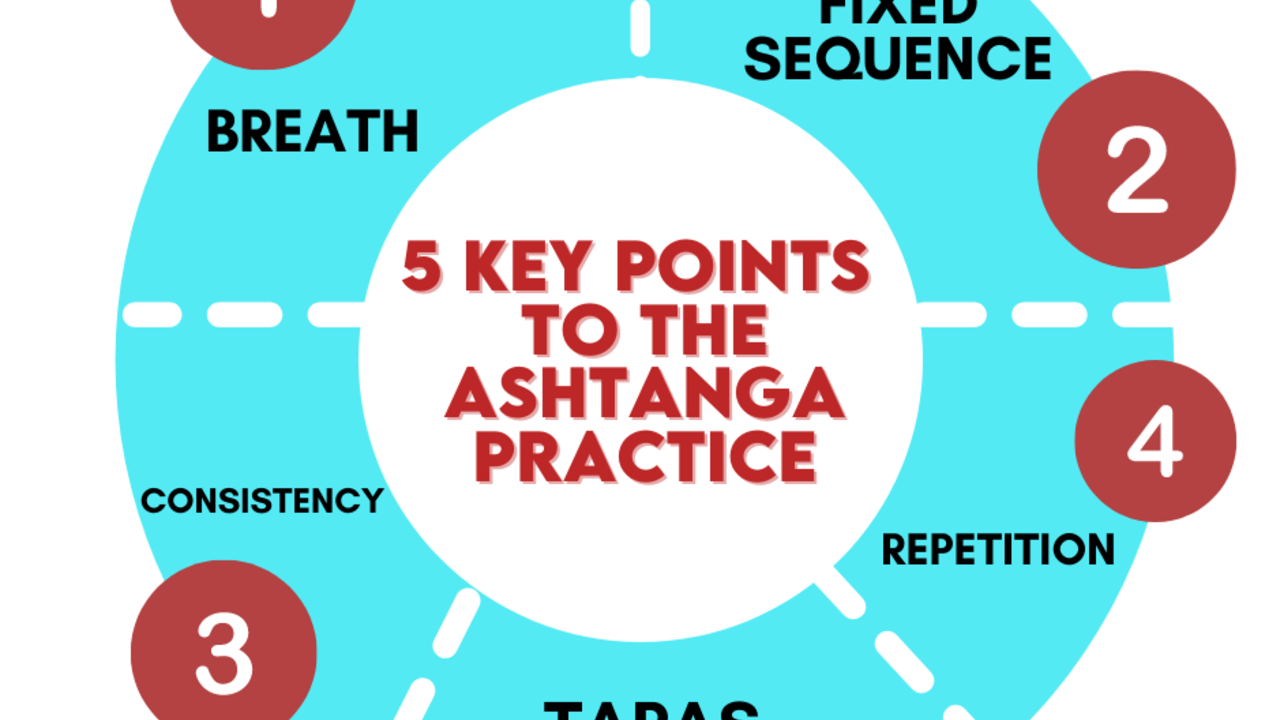
5 Keys to Ashtanga Yoga
Jan 11, 2021It can seem challenging to narrow anything down to five key points, especially something with as much depth as the Ashtanga system of yoga. But when I take a step back to look at the practice, it all becomes remarkably clear. The keys aren’t about any one thing in particular—not the body, not the mind, not the spirit; rather, like Ashtanga itself, they’re about all three. They’re about opening the door, about creating the ideal circumstances for your practice to work for you and your life, about holding space for yourself. They aren’t always easy, but they’re undeniably simple. And they start, as all things do, with the breath.

- Breath. Without the breath, we have no Ashtanga. When the breath stops, the yoga stops. Ideally, as you move through your Ashtanga practice, the duration of the breaths are equal—this supports equanimity on and off the mat. That said, maintaining equal breath throughout a practice can be difficult to achieve. One tip I like for working on this is to start on a posture-by-posture basis. The focus on the breath is a central aspect of what makes Ashtanga an internal practice. Ashtanga gives you infinite room to refine the breath— this can be accomplished by focusing on the space between the inhale and the exhale, or on the end point of the breath, or on the coordination of your breath with your movements. There is endless opportunity to move into the breath in new and subtle ways, and there will always be another posture to challenge the quality of your breathing.
- Fixed Sequence. Strictly speaking, the Ashtanga yoga system is comprised of six asanas with prescribed drishti, breath, and duration. There are several purposes to this:
- You don’t get to skip postures you don’t like.
- Your teacher can’t skip postures they don’t like.
- You uncover strengths you might never have imagined.
- You are able to experience your practice more internally when you aren’t worrying about what comes next or straining to hear or see what a teacher is directing.
- A fixed amount of time in each posture allows you to find nirodhah/stillness in your body. You start by finding yogas citta vritti nirodhah first in your legs and arms, they are stabilizing, rooted and unmoveable in asana, and then you can then begin to look for it in your mind.
- A fixed sequence enables the student to memorize the series more easily, leading to increased self-sufficiency in practice.
- Consistency. Practicing six days a week is imperative to Ashtanga. Amongst the many benefits to having a consistent practice are: Having this consistency of practice strengthens accountability, allows the student to see their improvement day to day, creates a long view of the practice, and allows the body to acclimate more quickly. A consistent practice is a commitment to self-transformation.
- Repetition. The repetition that is integral to an Ashtanga practice differentiates it from other styles of yoga. And that’s one of the most interesting things—anyone who practices will tell you it is never the same practice twice. Repetition shows us that we are what changes—not the practice. This is an important lesson on impermanence.
- Tapas. Tapas can be translated as discipline, austerity, or burning enthusiasm. We all have some amount of natural resistance to the practice—you might feel this in your natural tendency to sleep in, or more literally in your hamstrings when you try to forward fold. When we use our self-discipline to do things that we would otherwise resist, we create friction. This friction creates heat. And this heat is what helps us create real change. Tapas burns away the negative thought patterns, habits, or samskara we might otherwise fall into.
The beauty of Ashtanga is that it is so simple in its complexity and complex in its simplicity. Decades in, you can feel like a beginner in the best way possible, still making new discoveries every single day. Just as with the breath, the practice of Ashtanga offers endless opportunity to explore more deeply the subtleties of mind, body, and spirit. These five keys, in my experience, are among the most essential tools on the journey.
I hope you'll join me for Primary Series Interactive Online Study. It begins Saturday January 16th.
Stay connected with news and updates!
Join our mailing list to receive the latest news and updates from our team.
Don't worry, your information will not be shared.
We hate SPAM. We will never sell your information, for any reason.




